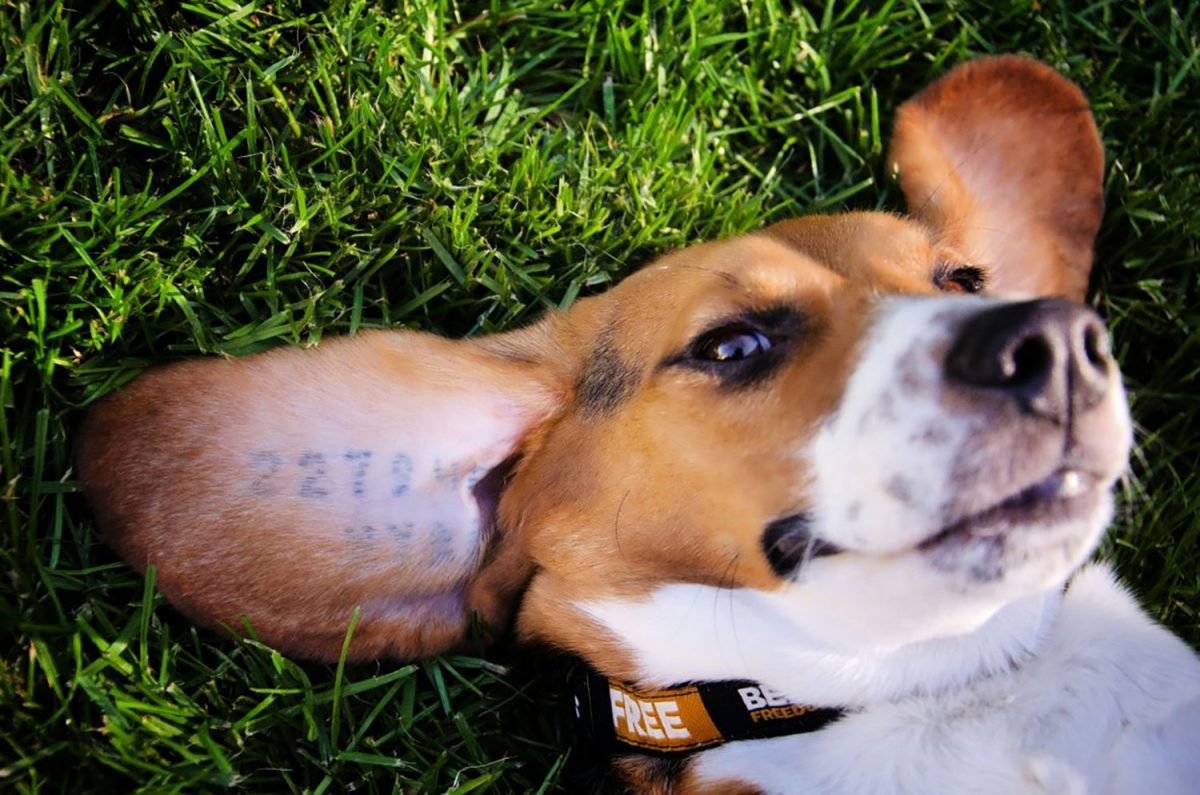
Shannon Keith and Kevin Chase of the beagle freedom project
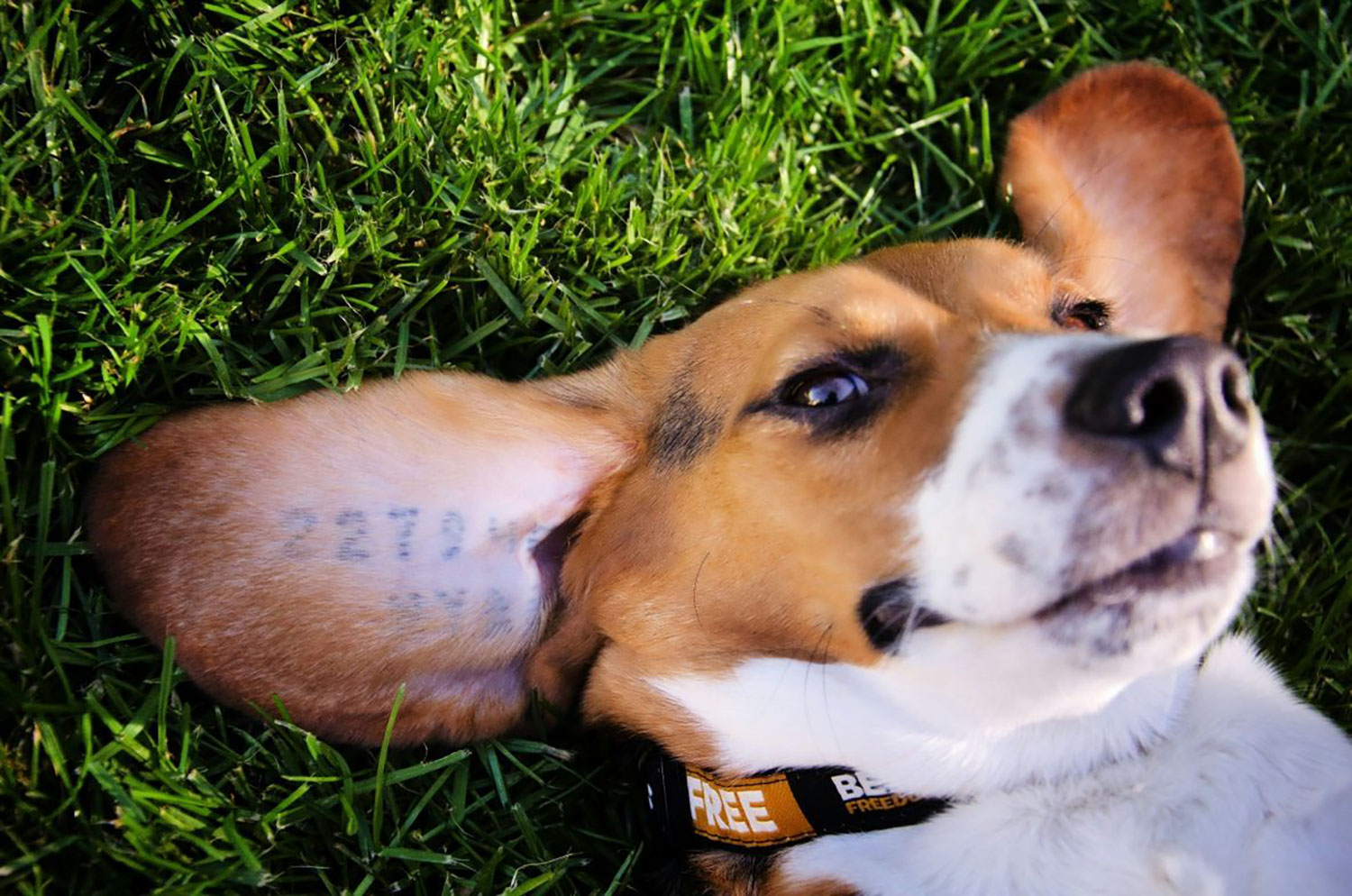
The Beagle Freedom Project’s mission is to rescue and find homes for beagles used in laboratory research. It was formed in December 2010 when Shannon Keith received information that beagles who were to be used for animal experiments in a research lab were to be given a chance at freedom. Beagle Freedom Project is a service of Animal Rescue, Media & Education (ARME). Founded in 2004, ARME is a nonprofit advocacy group created to eliminate the suffering of all animals through rescue, public education and outreach.
The Beagle Freedom Project’s mission is to rescue and find homes for beagles used in laboratory research
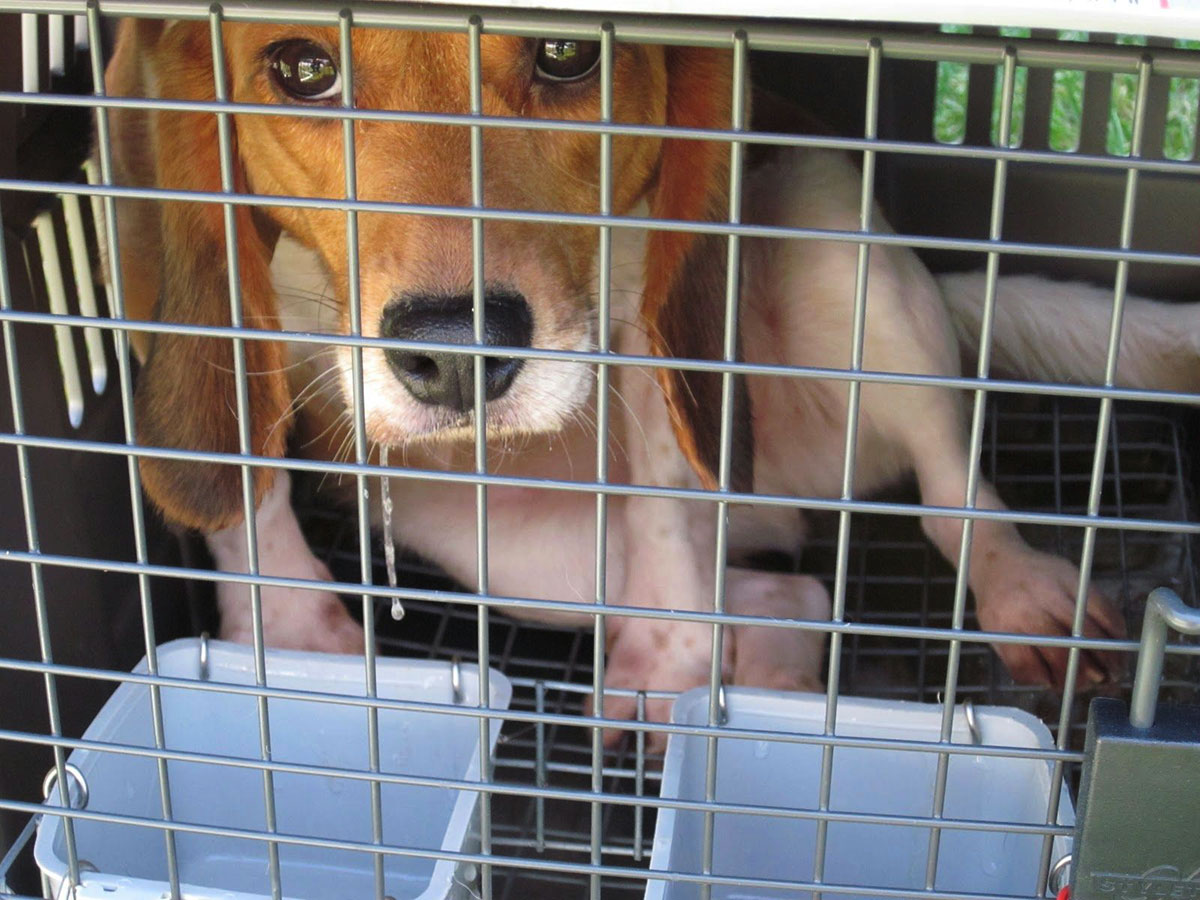
Shannon Keith is an activist attorney, a multi-award-winning filmmaker and the founder and president of the non-profit organization, ARME (Animal Rescue, Media & Education) and it’s mission, Beagle Freedom Project. Shannon formed ARME in 2004, a non-profit rescue and advocacy group, in order to create positive change for animals, rescue animals in need, and assist in laws for the betterment of their welfare.
Kevin Chase is the Vice President of ARME’s Beagle Freedom Project. Kevin’s portfolio of responsibilities includes the charity’s legislative agenda, development, and communications. Prior to working with Beagle Freedom Project he was the president of the audacious anti-animal testing organization called SHAC (Stop Huntingdon Animal Cruelty) that made history bankrupting a notorious laboratory. He currently resides in Los Angeles with his two rescued research beagles and partner Aaron.
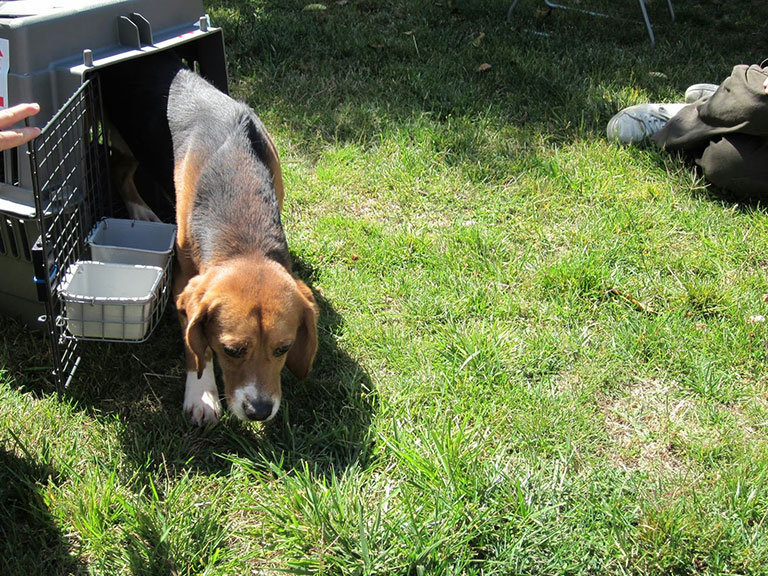
Shannon and Kevin and their amazing organization have exposed the truth behind this horrific industry. Their hope is that with your help, they can encourage more research labs to release animals and give them a chance at life, instead of destroying adoptable pets.

Can you tell us about your background? How did you meet?
Shannon and I met in 2001 at a large national demonstration against a controversial animal testing laboratory. I was the president of a non-profit organization whose mission was to challenge this notorious facility, and Shannon offered her services as a lawyer to help secure permits and protection for the activists.
Over the course of the last 15 years we have remained steadfast friends, and now we are professional colleagues.
Shannon is a pedigreed attorney from Pepperdine Law School. She has also been a life-long champion of animal rights and particularly animal rescue efforts. In 2004 she formed ARME (Animal Rescue Media and Education) to help animals languishing in the high-kill shelters of Los Angeles. She also made two award-winning documentaries about the plights of animals in laboratories and in the fur industry.
I grew up in the Midwest and earned my degree in political science. I too have been a long-time champion of replacing animal models in scientific experimentation. After college I spent some time in the UK working on campaigns to end vivisection and brought these skills back to the US to form a campaign that targeted one particular laboratory. This advocacy shook the animal testing industry and led to a massive shareholder exodus, bankrupting the lab. This impact did not go unnoticed by John Ashcroft’s Justice Department, and ultimately I was prosecuted under the constitutionally dubious Animal Enterprise Protection Act. After a brief state-mandated vacation I was happy to find my voice again within ARME’s Beagle Freedom Project (BFP).
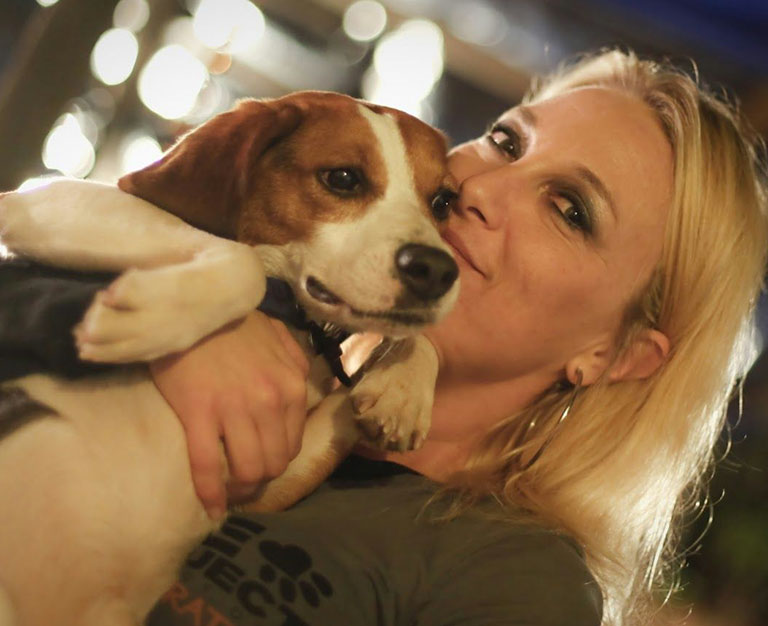
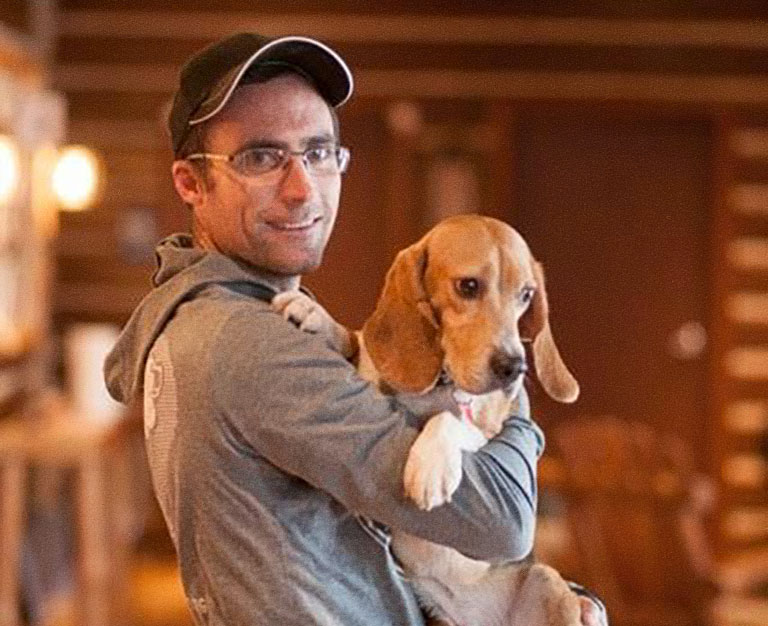
Was there an event or an “aha!” moment that made you create the Beagle Freedom Project?
Although Shannon is an accomplished attorney, she is also a product of growing up in Los Angeles. With a father who was a filmmaker and child stars attending her high school, Shannon was well immersed in the power of the camera. In 2010 when a southern California laboratory contacted her shelter rescue group, ARME, to inquire about surrendering two “experimentally spent” beagles, Shannon seized at the chance.
Shannon filmed the release of the two beagles, and what she captured on tape was surprising. The beagles, who had never before been outside, seen the sun, smelled fresh air or stepped on grass, took a long time to bravely and cautiously step outside to explore a gigantic world that had for so long been denied to them. The video became a viral hit, as it was both heartbreaking and heartwarming. Shannon realized that these little animal testing survivors had the ability to raise awareness of animal testing and touch peoples’ hearts in a way nothing else could.
The beagles, who had never before been outside, seen the sun, smelled fresh air or stepped on grass, took a long time to bravely and cautiously step outside to explore
Since this first rescue, over 500 animals have found freedom in high-profile public rescues. These animals serve as ambassadors for those still languishing in labs, reminding the public that these dogs, cats, rabbits and other animals are not abstract, furry little test-tubes or petri dishes, but animals no different than the ones millions of Americans share their homes with.
Before I saw the viral video of the first rescue , as well as the BFP window display at James Pearse, I had never heard of dogs being used in research. How common is it? Why is it kept so secret?
Using dogs in research is this industry’s dirty little secret. The number one reaction to people seeing one of the BFP videos or hearing about a release is a surprised, “Wait… they still do this to dogs and cats? I thought this was banned.”
A primary purpose of ARME’s Beagle Freedom Project is to use these poignant rescues as a vehicle to prompt a public conversation about the continued use of dogs and other animals in research. The more the public is informed, the more critical questions can be asked and this process brought to an end.
According to the latest USDA APHIS reports, there are about 65,000 dogs and 20,000 cats currently in U.S. laboratories. More than 350 laboratories across the country use these animals. While these numbers are tragically high, they do pale in comparison to the almost unquantifiable numbers of mice, rats, birds and other animals subjected to violent research protocols. These animals do not even enjoy the scant protections of the Animal Welfare Act, thanks to lobbying by the pharmaceutical industry.

What is life like for beagles in labs? What are the conditions?
The life of a laboratory beagle is sad, lonely and often painful. Their world is typically in a basement laboratory (due to drainage and sound-proofing needs). They live in stainless steel cages with slatted floors. They are stacked two high and are placed in windowless rooms. There are cinderblock walls, concrete floors, and those horrible long fluorescent lights overhead. All they can hear are the barks and whimpers of other dogs and the echoing clanks of doors being opened and shut. The smell of ammonia from urine is strong.
Laboratory dogs, if caged separately, are supposed to get 15 minutes a day outside of their cages to run in the room their cages are in. If they are housed two to a cage, the Animal Welfare Act does not mandate any exercise or socialization for them. The only other times the dogs are handled is when a white-gloved hand reaches in to pull them out and carry them down a hall to be tested on.
Of the 65,000 dogs in U.S. Laboratories, beagles are the most common and preferred breed choice because of their gentle and people-pleasing nature. They are often used in toxicity testing where they are exposed to an array of ingredients or toxins in various concentrations to see how sick they become.
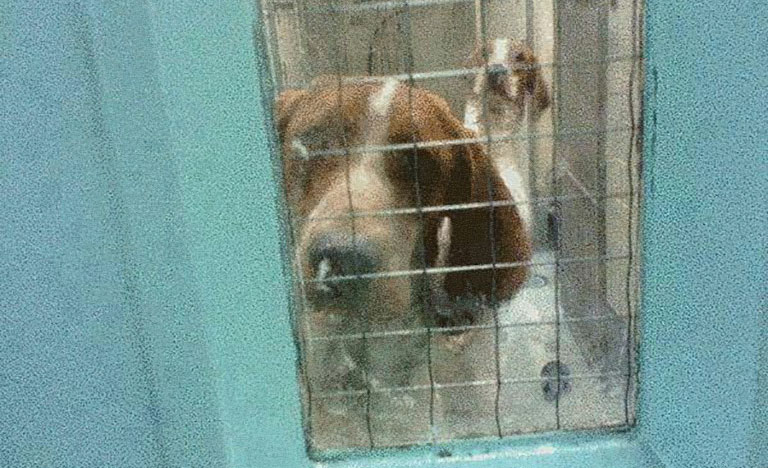
Where do the beagles used in research come from?
“Purpose-bred for research beagles”, as they are referred to in the testing industry, come from commercial breeders that specialize in breeding and selling animals to laboratories. There are a few big breeders in the U.S.; the most infamous of them is Marshall Farms, located in upstate New York.
These dogs cost anywhere from $600 to $1000 (usually paid for with tax-payer dollars doled out by the NIH) and cargo-shipped to labs across the country. These dogs are never treated as family companions, given walks, treats, affection or even names. They are known by the number the breeders and/or labs permanently tattoo in the dogs’ floppy ears.
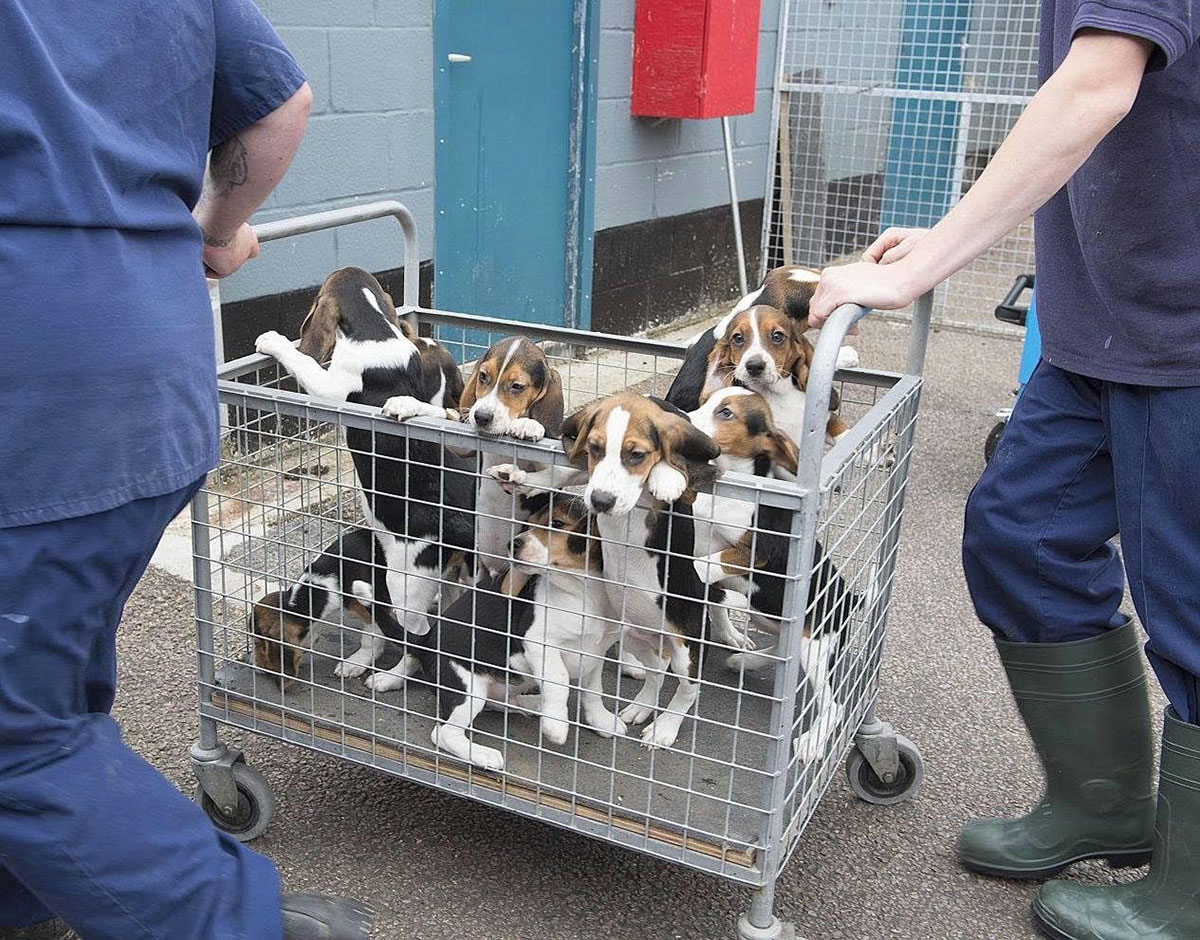
Is it difficult to rescue beagles from labs?
Yes, it’s extraordinarily difficult, as most laboratories prefer to kill these dogs (even if healthy) instead of letting rescue groups find them homes for fear of public exposure and scrutiny. Beagle Freedom Project is a rare example of a charitable rescue program that has not only been successful in negotiating for the release of these survivors, but also in championing their replacement with non-animal testing methods at the same time.
Beagle Freedom Project is the only national laboratory animal rescue group in the country. We spent years not only building our reputation and experience, but we also did the hard work of building a national database of applicants waiting for a rescue to happen. This allows BFP to make the bold promise to any lab anywhere in the country that if they decided to release a group of dogs, we can be ready on a moment’s notice to pick them up, give them emergency veterinary care and immediate in-home placement with a foster family.
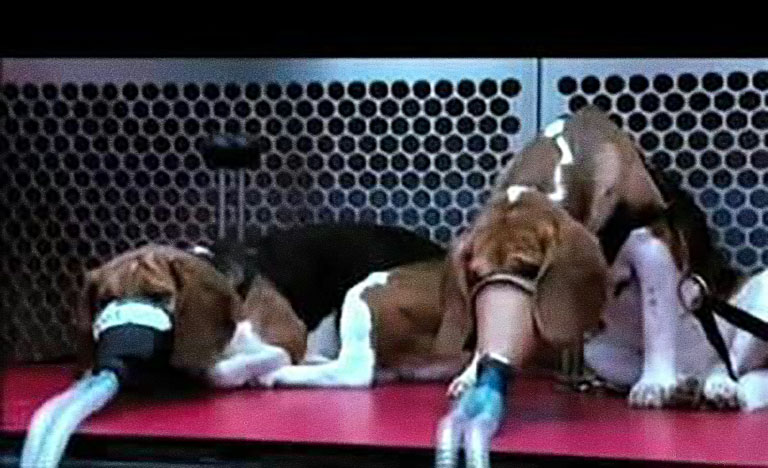
I know you guys created the Beagle Freedom Bill, and it has already passed in several states. Can you tell us about it?
The Beagle Freedom Bill is BFP’s signature piece of legislation. It came from our frustrated experience of having laboratories choose to kill these animals instead of letting them find freedom, fun and affection. The bill addresses a real deficiency of law, as there are no regulations, guidelines or policies that address post-research care and adoption opportunities. Dogs in labs are afforded some degree of protection by the Animal Welfare Act and other guidelines that determine cage size, water and food access, pain management, air ventilation, etc, but whether or not a dog gets a chance at a home when the study ends is typically up to the enthusiasm of a low-level animal care technician begging and pleading with her higher-ups to let her help.
Our position is this: after all these animals have had to endure for our products and curiosities, they deserve every chance at freedom and a family, especially since our tax-payer dollars are often what is subsidizing the purchase of these animals. The Beagle Freedom Law would mandate that after the research experiments end, and if the dog is still healthy, then the lab must at least pick up the phone and call a non-profit rescue organization to inquire if they can take the animal and find him or her a home. This is not a controversial proposal; it is common sense, and it is compassionate. Sadly most labs oppose even this small measure, preferring to “self-police.”
Fortunately for the animals in laboratories, Beagle Freedom Project has been very successful so far. California, Minnesota, Nevada and Connecticut have all passed the Beagle Freedom Law! The legislation is pending in New York, Illinois, and Maryland.
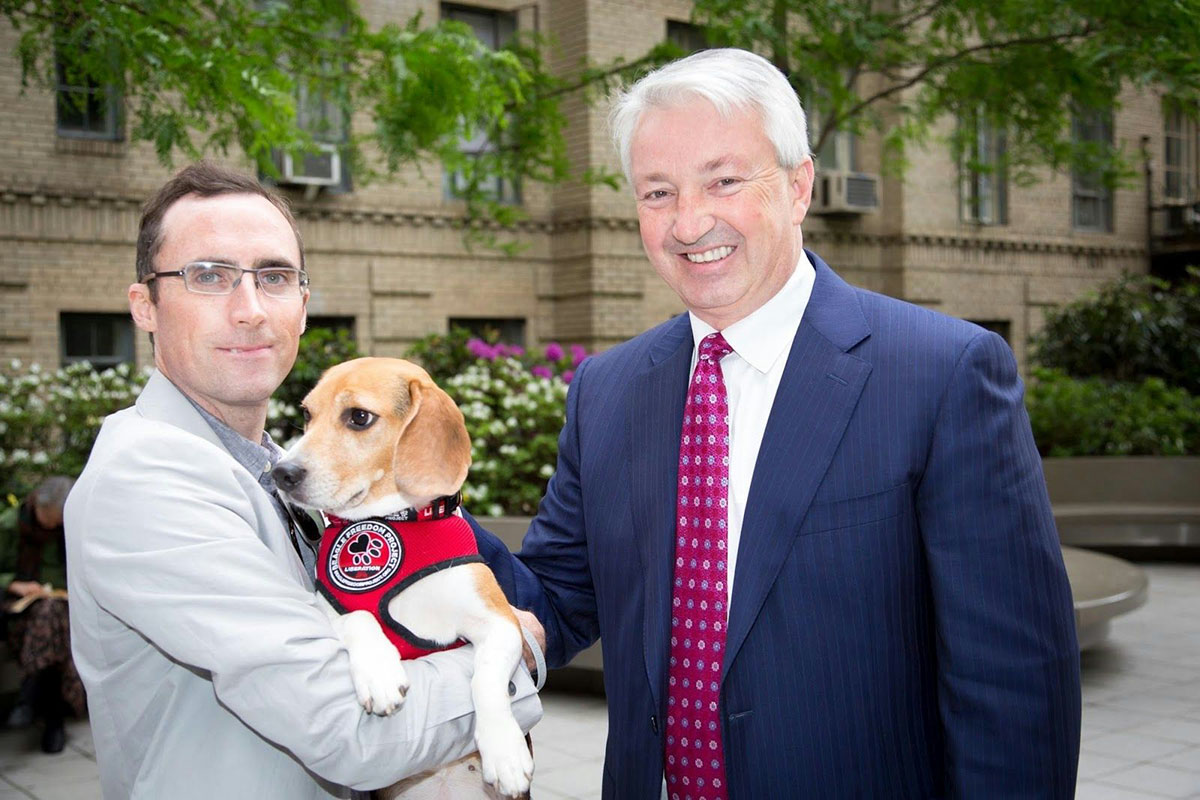
You also created the Cruelty-Cutter app, which everybody should have on their phones. Can you tell us about it?
Cruelty-Cutter is “Activism 101.” BFP’s pioneering app allows shoppers to scan bar codes of household and cosmetic products and see immediately if the item is tested on animals. If a product is cruelty-free, users can let their friends know by sharing the information on social media. It’s also a way to name-and-shame companies that test on animals and to display a cruelty-free alternative. The ‘Bite Back’ feature allows users to email the company and tell them they lost a customer because of their testing policies. Cruelty-Cutter has the most extensive cruelty-free database of any organization and constantly updates it.
The analytics built into Cruelty-Cutter allow BFP to track the number of boycotted products and calculate a survey-based valuation of future lost sales and negative social media mentions. BFP will use this data to present annualized lost revenue statements for offending companies. Cruelty-Cutter makes a financial argument that many businesses will take seriously.
What is the Identity Campaign?
In 2015, BFP launched a first-of-its-kind public awareness effort – the Identity Campaign. BFP researchers spent six months obtaining the Federal ID numbers of dogs and cats held at taxpayer-funded institutions in order to give a face and a name to individual research animals. Through this campaign, members of the public can symbolically “adopt” an actual dog or cat still imprisoned and become an outspoken advocate for this individual animal.
Participants visit IdentityCampaign.org and choose an animal. The adopter then gives the animal a name, and BFP sends a welcome kit, which includes a records request form to fill out and mail to the laboratory. Using their state’s Freedom of Information laws, the adopter demands the release of their animal’s veterinary reports and any experimental protocols. This campaign represents the first time in the history of animal advocacy that an organization has utilized the enthusiasm of its supporters to take action on their own to fight on behalf of animals in laboratories.
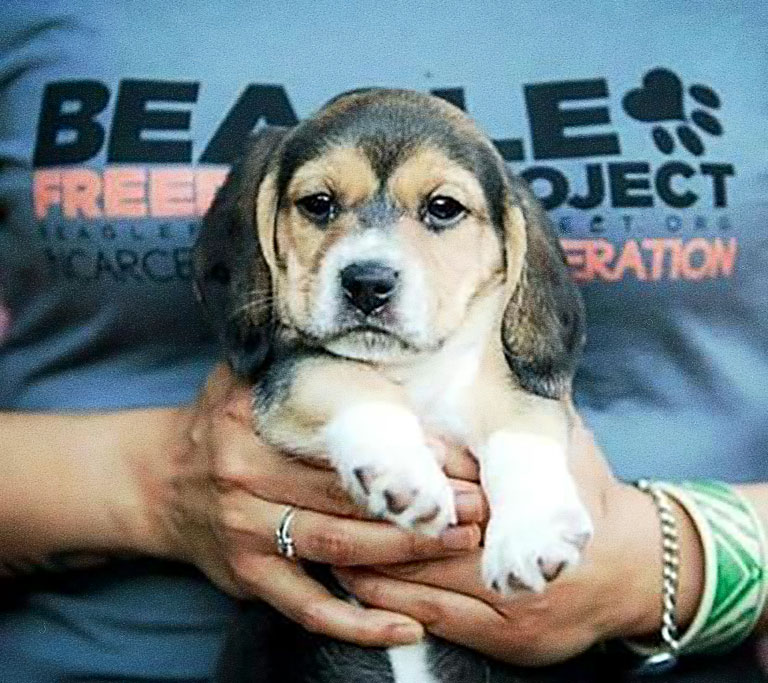
Once campaigners receive records, BFP can paint a picture of what laboratory life looks like for the animal. BFP reviews the records to identify potential violations of federal law or grant guidelines. BFP is currently working on complaints and lawsuits based on this.
This is a uniquely powerful effort in raising public awareness, because the campaign underscores that each animal in a laboratory is a unique being. By giving these animals identities, people gain a deeper understanding of the issue and connect with the victims of animal testing in a more personal way. They become activists.

What else can people do to help?
There are four primary ways the public work with Beagle Freedom Project to help animals still in labs.
First is the most obvious: a donation. Beagle Freedom Project is a charitable rescue program, and all contributions are tax-deductible. The only way we can do these rescues, advocate for policy change, increase public awareness, roll out innovative apps, and make a difference is with the support of the public. We are a small grassroots organization, and your dollars do go directly towards helping the dogs!
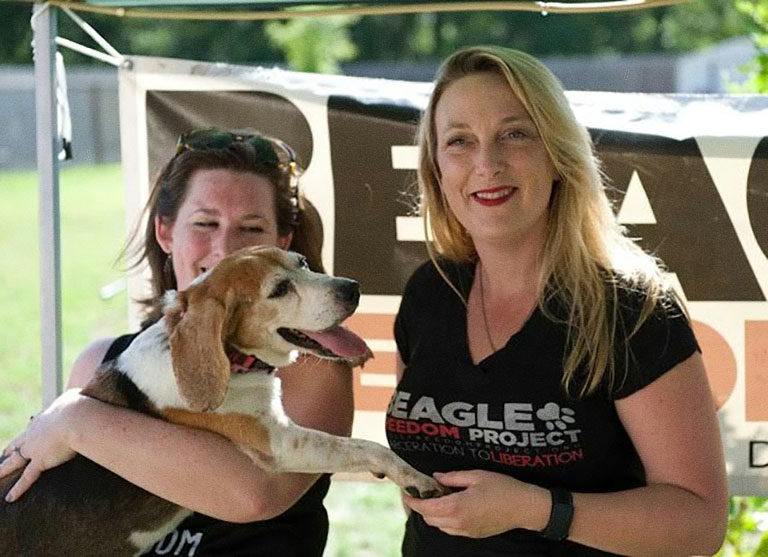
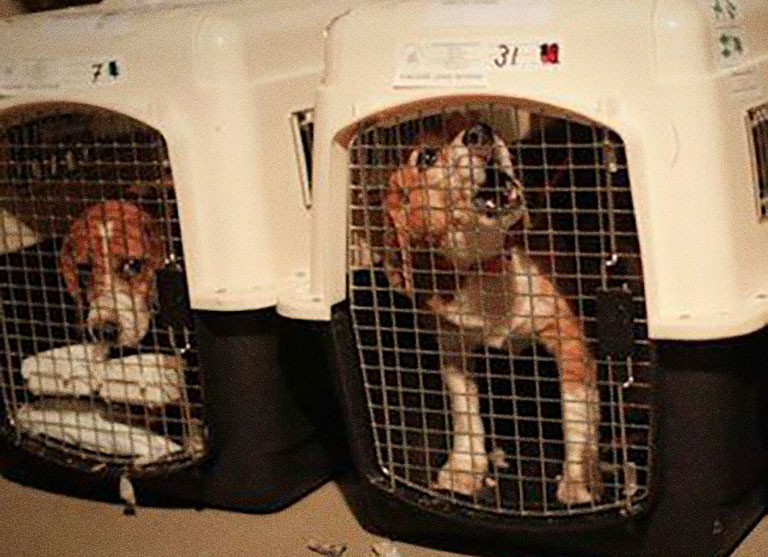
Second is sign up to foster or adopt. Having a nationwide applicant wait-list of families that are ready and willing to take in a rescued research animal is what allows BFP to secure the release of animals from labs anywhere in the country (and world!). We always need more families that are ready to open their homes and their hearts to an animal in need.
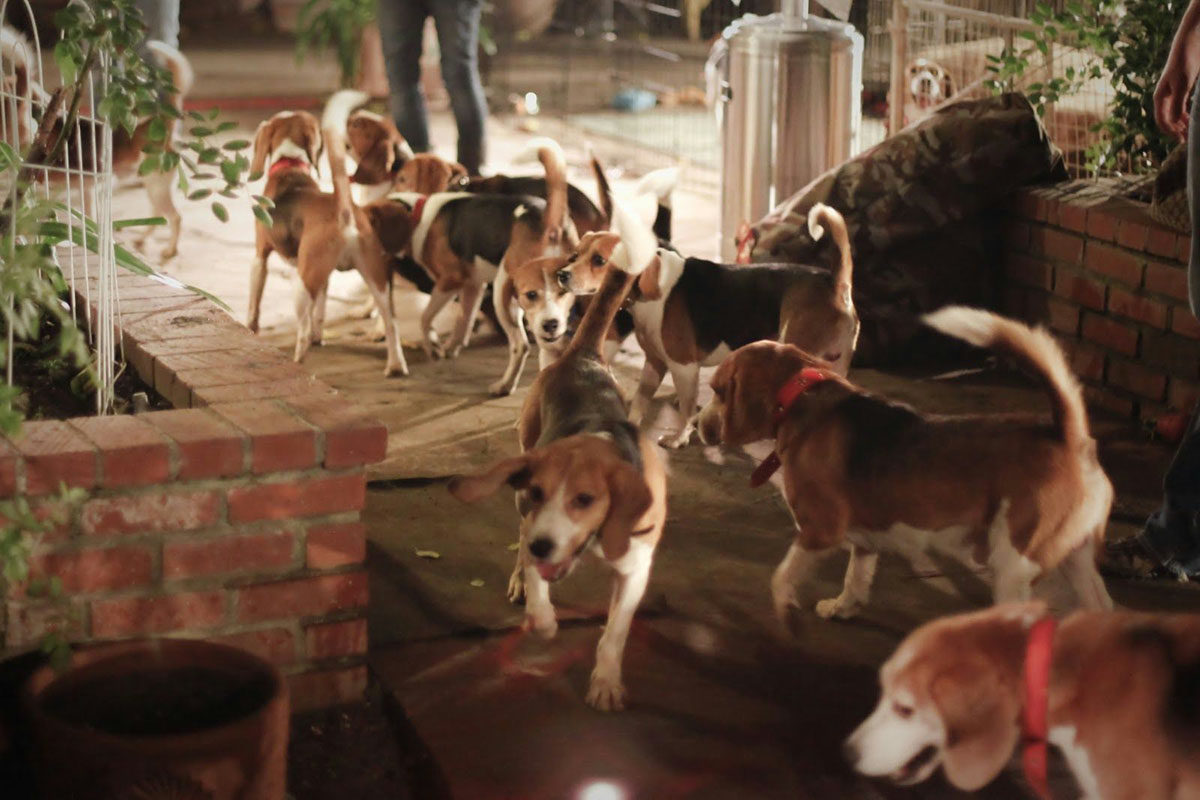
Third is help spread awareness about animal testing. Tragically, far too many people do not realize this practice still happens, and the best way to combat it is with knowledge. Have personal conversations with friends and family members about this important topic. Like, follow, and share BFP’s posts on Facebook, Twitter, Instagram, and YouTube. Sign up for the Identity Campaign and be a personal champion to an individual animal still stuck in the lab.
Finally and most easily – just shop cruelty-free. Download Cruelty-Cutter for free today and be a compassionate consumer.



Visit the website for The Beagle Freedom Project
Follow them on:

